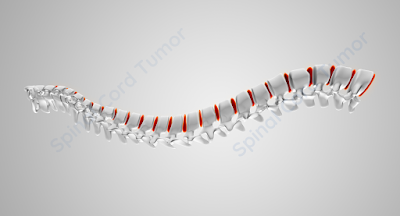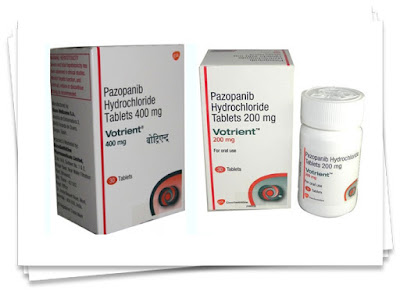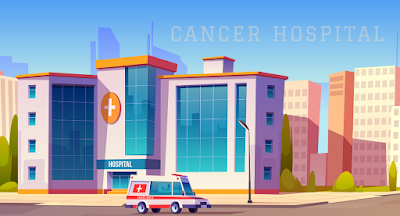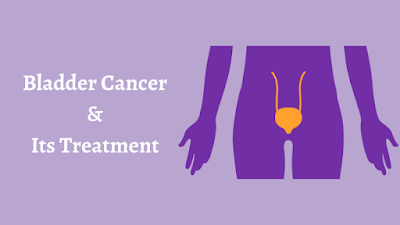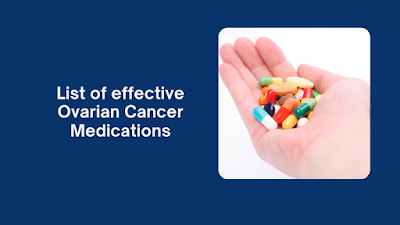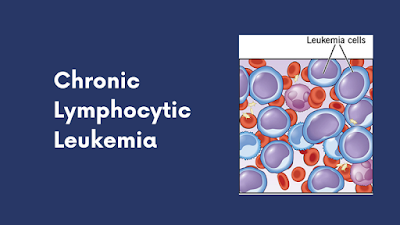Skin cancer: All cells in the body, including skin cells, repair and are replaced all the time in order to ensure the health of the tissue they form.
In the case of an unbalanced process, growth may become uncontrolled and a collection of abnormal cells may develop in a part of the skin.
Risk Factors: Any individual may develop skin cancer, but it is quite common in older people. The risk is also higher in those people who have:
- Freckled or fair skin.
- Fair hair & blue/green eyes.
- Had short but intense exposure to UV radiation.
- Actively tanned or used solariums
- Worked outdoors
- A weakened immune system
- Lots of moles on the body or moles with an irregular shape and uneven color.
- Family history of skin cancer.
- Certain skin conditions such as sunspots.
Types of Skin Cancer:
The 4 main skin cancer are BCC (basal cell carcinoma), SCC (squamous cell carcinoma), melanoma and Merkel cell Carcinoma.
BCC and SCC are also known as non-melanoma skin cancer or keratinocyte cancers.
Merkel cell carcinoma and angiosarcoma are the rare non-melanoma skin cancer. They are treated in a different way from BCC and SCC.
Solar Keratoses (Sunspots): These are basically not a skin cancer, but are a warning that you are more likely to get skin cancer.
It is associated with red, flattish scaling areas, and appears on the sun-exposed skin.
Signs: flat, scaly spot that feels rough; often the colour of your skin or red.
1. BCC - Basal Cell Carcinoma:
Basal cell carcinoma is the most common of all skin cancers. It occurs from the bottom layer of the skin surface and grows gradually over several months. It virtually never spreads to other areas of the body. It can exist in several ways ranging from the red scaly patch of the skin, to pearly lump (prominent blood vessels) on the surface. If it is not treated on time, it will continue to grow and may be responsible for causing ulceration of the skin.
Signs:
- Occurs on the body that have more exposure to the sun, such as the face, head, neck, shoulders, lower legs, lower arms but may occur anywhere on the body.
- May seems as a pearl-coloured lump.
- May bleed and turned inflamed; may appear to heal then turned inflamed again.
2. SCC - Squamous Cell Carcinoma:
Squamous cell carcinoma is the second most common type of skin cancer. Unlike BCCs, it has the ability in order to spread to other areas of the body. The risk of this occurring depends on its location, size, and its subtype. It exists on sun-damaged skin as a pink/red lump on the skin which may be tender. Often it may have an ulcerated centre. Generally, they grow rapidly than BCCs.
Signs:
- Occurs on areas of the body most often exposed to the sun, such as the neck, head, hands, forearms and lower legs, but may develop anywhere on the body.
- May bleed and turned inflamed, and is often tender to touch.
- Often appears as a thickened, red, scaly or rapidly growing lump.
- Quite common as you get older.
3. Melanoma:
It is basically the most serious form of skin cancer, that arises from the pigment-producing cells in the skin called melanocytes. It is one of the most common causes of death due to skin cancer worldwide.
Cure of melanoma is related to how deep it has spread on the skin when diagnosed. The earlier it is found, the greater the chance of cure. Melanoma mainly arises from a new or changing mole on the skin, although rarely may occur on the palms skin, the soles and even the nails.
Knowing about the ABCDE warning signs of the melanoma may help you find an initial stage melanoma.
A: Stands for the ASYMMETRY; one half is unlike the other half.
B: Stands for the BORDER; irregular, scalloped or poorly defined border.
C: Stands for the COLOR; may vary from one part to another; shades of tan & brown, black; sometimes white, red or blue.
D: Stands for the DIAMETER; while melanomas are usually higher than the 6mm when diagnosed, they may be smaller.
E: Represents EVOLVING; a mole or skin lesion that seems different.
Signs:
- Occurs as a maiden or existing spot on the body that changes shape, size, or color over a few weeks to months.
- Often has either a flat or raised surface.
- Probably more than 1 color (blue, brown, black, red, white, pink light grey, or the color of skin).
4. Merkel cell carcinoma:
It is mainly a kind of rare cancer associated with skin. Merkel cell carcinoma traditionally believed to arise from the Merkel cells, specialised cells involved in the sensation of “touch”, situated in the basal layer of the skin epidermis.
Signs:
The initial sign is a fast-growing, painless tumor on the skin. The tumor may be skin-colored and may appear in shades of blue, red, or purple. The maximum Merkel cell carcinomas occur on the face, neck or head, but they may appear anywhere on the body, even on parts not exposed to the sunlight.
Causes of Skin Cancer:
The major cause of all sorts of skin cancer is overexposure to the Ultraviolet radiation. Approximately 95% of skin cancers are due to UV exposure. When the unprotected skin is exposed to the UV radiation, the structure, as well as behaviour of the cells, may change.
Sun produced the UV radiation, but it may also come from artificial sources, such as sun beds.
UV radiation can't be felt or seen and it is not related to the temperature. It may cause:
- sunburn
- premature skin ageing
- damage to skin cells, which may lead to skin cancer.
Treatment of Skin Cancer:
Skin cancer is treated in different ways. Treatment basically depends on your general health, size, type, and location of the cancer, , any medications you are consuming (these may affect the amount of bleeding as well as healing time), whether the cancer has reached other organs of your body.
In case the biopsy has removed all the cancer, you may be not recommended for any further treatment.
SURGERY: For skin cancer, surgery is one of the most common treatments. The procedure type you have basically depends on the size as well as position of the cancer.
Maximum small skin cancers are removed by a dermatologist or GP. A surgeon is required in order to treat more complex cases.
Mohs surgery: Mohs surgery is usually performed under the local anaesthetic by a dermatologist.
It is prescribed for the treatment of skin cancers that have started to spread deep into the skin or recurred. It may also be prescribed for cancers in areas that are difficult to treat, such as close the eye or on the nose, ears and lips. Mohs surgery is more expensive than other types of surgery.
CURETTAGE & ELECTRODESSICATION: Curettage and electrodessication (or cautery) is prescribed for the treatment of some BCCs and squamous cell carcinoma in situ (Bowen’s disease). It is performed by a dermatologist.
The healthcare provider will give you a local anaesthetic and then scoop out the cancer using a small, sharp, spoon-shaped instrument addressed as a curette.
Low-level heat (cautery or electrodessication) will be applied in order to stop the bleeding and destroy any remaining cancer. The wound would heal within a few weeks, leaving a flat, round, small, white scar.
CRYOTHERAPY: Cryotherapy/Cryosurgery, is a way that uses the liquid nitrogen in order to remove some small BCCs & sunspots.
The healthcare provider, usually a dermatologist, sprays liquid nitrogen onto the sunspot or skin cancer and a small area of skin around it. You may experience a stinging or burning sensation, which may last a few minutes. The liquid nitrogen basically freezes and kills the abnormal skin cells and creates a wound. In a few cases, the procedure may be required to be repeated.
The treated area will be sore and red. A blister may be formed within a day.
TOPICAL TREATMENTS: Some skin spots and cancers should be treated with creams or gels. These are known as topical treatments. They may contain immunotherapy or chemo drugs, and are prescribed by healthcare practitioners. You need to use these treatments only on the particular spots or parts that your healthcare professional has asked you in order to treat. Never use leftover cream for the treatment of new spots that have not been assessed by your healthcare provider.
Imiquimod: It is a sort of immunotherapy that causes the body’s immune system in order to destroy cancerous cells.
It is prescribed in order to treat superficial BCCs, Bowen’s disease (squamous cell carcinoma in situ) and sunspots.
You should apply it directly to the affected area every night, usually 5 days a week for 6 weeks.
5-fluorouracil (5-FU): The fluorouracil 5 cream is mainly a type of chemo drug.
It is prescribed for treating superficial BCCs, sunspots &, sometimes Bowen’s disease.
The fluorouracil cream acts more effectively on the face and scalp. Your healthcare provider or dermatologist will instruct you how to apply the cream and how often. Many people use this cream twice daily for 2 to 3 weeks. Fluorouracil may need to be used for longer for some skin cancers. While using the cream, you will be more sensitive to the ultraviolet radiation and you should stay out of the sun.
Ingenol mebutate: It should be applied to the affected sunspots once daily for 2-3 days.
Adverse reactions may include skin flaking or scaling, reddening, crusting or scabbing, blisters, and mild swelling.
These adverse reactions should disappear within the 2 weeks of treatment finishing.
TARGETED THERAPY: Targeted therapy drugs are prescribed in order to treat melanoma and some non-melanoma skin cancers, such as rare cases of advanced basal cell carcinoma.
Dabrafenib (Tafinlar): Dabrafenib may be used (together with MEK inhibitor trametinib) following surgery in patients with stage III melanoma, where it is effective in order to lower the risk of the cancer coming back.
Trametinib (Mekinist): It is prescribed for the treatment of melanoma that has spread or difficult to be removed completely.
Trametinib may also be recommended together with dabrafenib following surgery in patients with stage III melanoma, where it may act by lowering the risk of the cancer coming back.
Some other drugs can be also recommended, these are as follows:
- Cobimetinib (Cotellic)
- Binimetinib (Mektovi)
- Encorafenib (Braftovi)
- Vismodegib (Erivedge)
- Sonidegib (Odomzo)
- Vemurafenib (Zelboraf)
IMMUNOTHERAPY: Checkpoint inhibitors and cytokines are a couple of types of immunotherapy medications that may be prescribed for treating some cases of Merkel cell carcinoma and melanoma. The medicines are designed in order to trigger the immune system to identify and attack cancer cells.
Some major immunotherapy medications are as follows:
- Pembrolizumab (Keytruda)
- Nivolumab (Opdivo)
- Atezolizumab (Tecentriq)
- Ipilimumab (Yervoy)
- Interleukin-2 (IL-2)
PHOTODYNAMIC THERAPY: PDT uses a cream and a light source in order to make your cancer sensitive to light. It is recommended for the treatment of sunspots, superficial BCCs and squamous cell carcinoma in situ/Bowen’s disease.
Adverse reactions may include swelling and redness, which usually ease following a few days. PDT is commonly responsible for causing stinging, burning or tender feeling in the treatment area, mainly to the face.
RADIATION THERAPY: Radiotherapy mainly uses radiation (x-rays or electron beams) in order to damage or kill cancerous cells. It is recommended for BCC or SCC in such areas that are hard to treat with the help of surgery, such as the face. Sometimes this therapy is also recommended following surgery in order to block the cancer from coming back or spreading.
REMOVING LYMPH NODES: In case your cancer has spread, your healthcare provider may remove the lymph nodes in an operation that is known as lymph node dissection. This is effective by reducing the chance of the cancer spreading to other organs or coming back. In order to know more, speak to your doctor.
Prognosis: Prognosis indicates expected outcome of a particular disease. Your treating healthcare professional is an appropriate person in order to interact about your prognosis. Maximum BCCs as well as SCCs can be successfully treated, especially if detected early.
Apart from this, most of the non-melanoma skin cancers do not pose a serious risk to your health.
How can I prevent skin cancer?
It is believed that sun exposure is the most preventable risk factor for all skin cancers.
Following several things you must need to do:
- Use a broad-spectrum, water-resistant sunscreen with SPF of 30 or more to the entire area not covered by clothes. The potential of “Broad-spectrum” helps in order to protect ultraviolet A (UVA) as well as ultraviolet B (UVB) rays.
- Always wear a long-sleeved shirt, pants, a wide-brimmed hat, and sunglasses, where possible.
- Seek shade when appropriate.
- Caution is required near water, snow, and sand because they reflect and intensify the damaging rays of the sun, which may increase the chances of sunburn.
- Vitamin D should be taken through a healthy diet that may include vitamin supplements. Avoid seeking the sun.
- Tanning beds should be avoided. UV light from the sun and tanning beds may be responsible for causing skin cancer as well as wrinkling.
